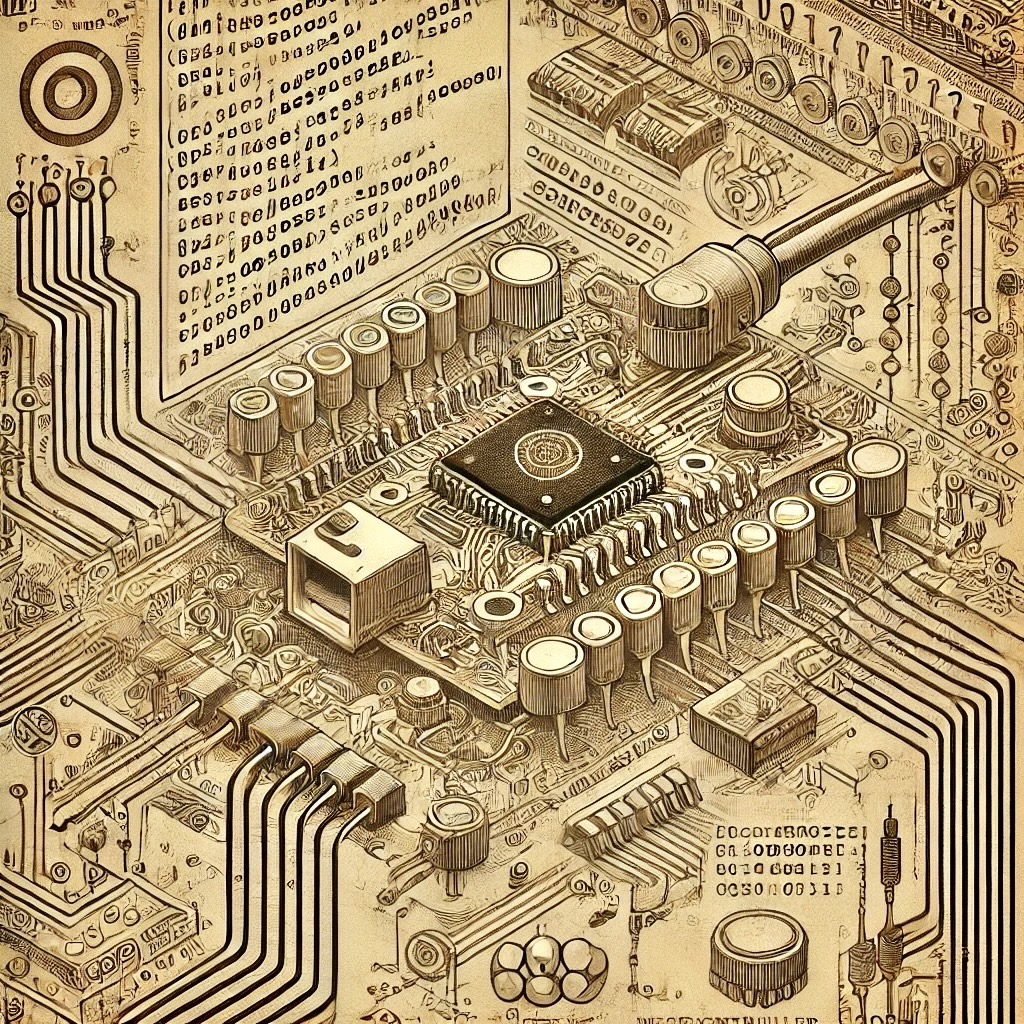Introduction
Microcontrollers communicate with other devices via wired communication protocols for data exchange. Each protocol serves different purposes, from low-speed, point-to-point communication to high-speed, multi-device networking. This guide covers popular wired protocols, including: UART, RS-232, I²C, SPI, Ethernet, CAN, RS-485, LIN, USB, and I²S.
Communication protocols can be thought of as languages that devices use to understand each other. Just as human languages have grammar rules and vocabulary, these protocols have specific rules about how data should be formatted, transmitted, and received. The choice of protocol can significantly impact your project's success, affecting factors such as:
- Data transfer speed and reliability
- Maximum communication distance
- Number of devices that can communicate simultaneously
- Hardware complexity and cost
- Power consumption requirements
1. UART (Universal Asynchronous Receiver-Transmitter)
UART is a simple, asynchronous protocol that uses two lines: TX (Transmit) and RX (Receive). It is commonly used for direct, point-to-point communication between microcontrollers or with peripherals such as GPS modules.
Key Features:
- Two-wire communication (TX/RX)
- Asynchronous operation (no clock signal required)
- Commonly used in debugging and serial communication
Basic Wiring
Microcontroller A Microcontroller B
TX ----------------> RX
RX <---------------- TX
2. RS-232
RS-232 is a standardized serial protocol widely used for communication between computers and microcontrollers. It uses a single-ended signal over a three-wire connection: TX, RX, and GND. Unlike UART, RS-232 defines voltage levels and hardware requirements.
Basic Wiring
Microcontroller PC/Device
TX ----------------> RX
RX <---------------- TX
GND ----------------> GND
3. I²C (Inter-Integrated Circuit)
I²C is a two-wire protocol (SDA for Data, SCL for Clock) commonly used to connect sensors, displays, and other peripherals. Multiple devices can share the same bus, identified by unique addresses.
Key Features:
- Two-wire interface (SDA/SCL)
- Multi-master and multi-slave architecture
- Used in sensor communication (e.g., temperature, pressure sensors)
Use case: Interfacing an Arduino with an OLED display.
Basic Wiring
Master MCU Slave Device 1 Slave Device 2
SDA ----------------> SDA ----------------> SDA
SCL ----------------> SCL ----------------> SCL
4. SPI (Serial Peripheral Interface)
SPI is a high-speed, full-duplex communication protocol that uses four wires: MOSI, MISO, SCK, and SS. It is widely used in applications requiring fast data transfer, such as SD card modules.
Key Features:
- Four-wire interface (MOSI, MISO, SCK, SS)
- Full-duplex communication
- Higher speed compared to I²C
Basic Wiring
Master MCU Slave Device
MOSI ----------------> MOSI
MISO <---------------- MISO
SCK ----------------> SCK
SS ----------------> SS
5. Ethernet
Ethernet allows microcontrollers to connect to local area networks (LAN) for fast communication using the TCP/IP protocol. Modules like the ENC28J60 or W5100 often handle Ethernet communication for microcontrollers.
6. CAN (Controller Area Network)
CAN is a robust protocol designed for real-time communication in automotive and industrial systems. It uses differential signaling over two wires: CANH and CANL, making it highly resistant to noise.
Basic Wiring
Key Features:
- Differential signaling for noise immunity
- Multi-master communication
- High reliability in harsh environments
7. RS-485
RS-485 is a differential communication protocol suited for long-distance and multi-device communication. It uses two lines, A and B, to transmit data, supporting up to 32 devices on the same bus.
Basic Wiring
Device 1 Device 2 Device 3
A ----------------> A ----------------> A
B ----------------> B ----------------> B
8. LIN (Local Interconnect Network)
LIN is a single-wire, master-slave protocol primarily used in automotive applications for low-cost and low-speed communication between devices such as car door controllers.
9. USB (Universal Serial Bus)
USB is a universal communication protocol for connecting microcontrollers to computers or other USB-capable devices. It supports both data transfer and power delivery. Microcontrollers often use USB to act as virtual COM ports or HID devices.
Basic Wiring
Microcontroller PC/Host
D+ ----------------> D+
D- ----------------> D-
GND ----------------> GND
10. I²S (Inter-IC Sound)
I²S is a protocol used for digital audio communication between microcontrollers and audio devices such as DACs or ADCs. It uses three lines: SD (Serial Data), WS (Word Select), and SCK (Clock).
Basic Wiring
Master MCU Audio Device
SD ----------------> SD
WS ----------------> WS
SCK ----------------> SCK
Conclusion
Microcontroller communication protocols provide flexibility to interface with various peripherals. Whether you're working on low-speed, robust systems with RS-485, real-time systems with CAN, or high-speed networking with Ethernet, selecting the right protocol depends on your application's needs.


